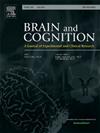Mindfulness practices and transcranial direct current stimulation: A systematic review and meta-analysis of self-reported mindfulness
IF 1.4
3区 心理学
Q3 NEUROSCIENCES
引用次数: 0
Abstract
There is a growing body of evidence investigating the effectiveness of combining psychological therapy and techniques with transcranial Direct Current Stimulation (tDCS) for facilitating meaningful change across a wide range of clinical and non-clinical domains. The objective of the current review was to examine mindfulness practices in combination with tDCS on self-reported mindfulness, given the well-established benefits of mindfulness on psychological health as well as the critical role of mindfulness processes as mediators of change in psychosocial intervention. Two databases were searched for sham-controlled studies of combined tDCS and mindfulness that included standardised mindfulness measures. Eight randomised trials met inclusion criteria. Results of the random-effects meta-analysis showed that mindfulness-based practices combined with active tDCS intervention revealed a small but significant increase in overall mindfulness as compared to sham tDCS and mindfulness (SMD = 0.24; 95% CI, 0.01, 0.48, p = 0.044). There was heterogeneity in the mindfulness practices, populations and number of stimulations, although there was general consistency in online tDCS location and intensity parameters (i.e., most commonly 2 mA anodal stimulation to the prefrontal cortex). The present findings provide evidence from sham RCTs that tDCS combined with mindfulness practice can augment self-reported mindfulness, lending support to a synergistic multimodal combination.
正念练习和经颅直流电刺激:自我报告正念的系统回顾和荟萃分析
越来越多的证据表明,将心理治疗和技术与经颅直流电刺激(tDCS)结合起来,在广泛的临床和非临床领域促进有意义的改变是有效的。鉴于正念对心理健康的益处以及正念过程在社会心理干预中作为变化中介的关键作用,本综述的目的是研究正念练习与tDCS结合对自我报告正念的影响。我们在两个数据库中搜索了tDCS和正念联合的假对照研究,其中包括标准化的正念测量。8项随机试验符合纳入标准。随机效应荟萃分析结果显示,与假tDCS和正念相比,基于正念的练习与主动tDCS干预相结合,整体正念水平有小幅但显著的提高(SMD = 0.24;95% CI, 0.01, 0.48, p = 0.044)。尽管在线tDCS位置和强度参数(即最常见的是对前额叶皮层的2 mA阳极刺激)大致一致,但正念练习、刺激数量和刺激次数均存在异质性。目前的研究结果提供了假性随机对照试验的证据,表明tDCS结合正念练习可以增强自我报告的正念,为协同多模式组合提供支持。
本文章由计算机程序翻译,如有差异,请以英文原文为准。
求助全文
约1分钟内获得全文
求助全文
来源期刊

Brain and Cognition
医学-神经科学
CiteScore
4.60
自引率
0.00%
发文量
46
审稿时长
6 months
期刊介绍:
Brain and Cognition is a forum for the integration of the neurosciences and cognitive sciences. B&C publishes peer-reviewed research articles, theoretical papers, case histories that address important theoretical issues, and historical articles into the interaction between cognitive function and brain processes. The focus is on rigorous studies of an empirical or theoretical nature and which make an original contribution to our knowledge about the involvement of the nervous system in cognition. Coverage includes, but is not limited to memory, learning, emotion, perception, movement, music or praxis in relationship to brain structure or function. Published articles will typically address issues relating some aspect of cognitive function to its neurological substrates with clear theoretical import, formulating new hypotheses or refuting previously established hypotheses. Clinical papers are welcome if they raise issues of theoretical importance or concern and shed light on the interaction between brain function and cognitive function. We welcome review articles that clearly contribute a new perspective or integration, beyond summarizing the literature in the field; authors of review articles should make explicit where the contribution lies. We also welcome proposals for special issues on aspects of the relation between cognition and the structure and function of the nervous system. Such proposals can be made directly to the Editor-in-Chief from individuals interested in being guest editors for such collections.
 求助内容:
求助内容: 应助结果提醒方式:
应助结果提醒方式:


